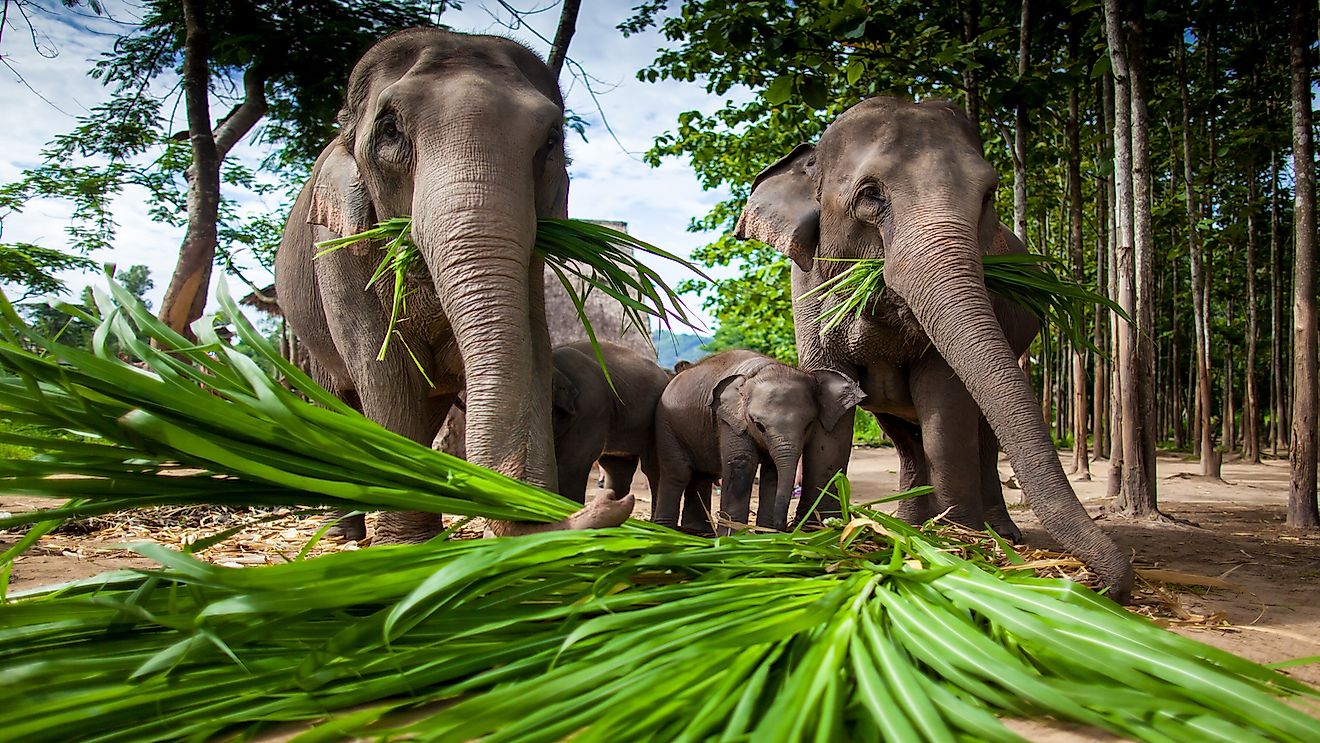Why Are The World's Biggest Animals Plant Eaters?

Did you know that the top 5 largest land animals on the planet are all herbivores?
While this may be a surprise to some, to evolutionary biologists, it makes tons of sense.The largest animal remains ever found (in Patagonia, nonetheless) belonged to a Titanosaur. The animal would have been roughly 131 feet long, 65 feet high and weighed an estimated 90 tons (or 180,000 pounds). Based on its teeth, scientists have surmised that Titanosaurs were herbivores.
Why is it that the largest land animals are plant-eaters?
There are several theories as to the source of the herbivores’ size, but most are tied to the food chain and how it works. In the food chain, there are producers (such as plants) that convert sunlight into energy. Next, there are consumers (like elephants) who convert plants into energy. Finally, there are predators (like lions) that eat herbivores and convert them into energy. For each rung up the food chain, there is an energy loss. This means that the animals higher up on the food chain need to eat significantly more than those in the lower levels to achieve the same energy intake. As an example, a carnivore the size of a giraffe would have to spend all of its time hunting and eating animals to consume enough energy to compensate for the energy loss. And so much hunting would mean that the food source would be reduced quickly. For the food chain to work appropriately, there can only be a limited number of carnivores at the top. It would be unsustainable otherwise. The two theories around why herbivores are so large are connected to evolutionary advantage and as a digestive adaptation.
Evolutionary advantage: Herbivores have to eat all day long to maintain their energy. This has two effects. One, it means that there must be a large amount of plants for the animals to consume. Two, it means that the animals need to survive as long as possible so that they can reproduce. Some scientists believe that the largest animals are plant eaters because that allows them to cover large roaming areas (so that they can graze all day long) while also escaping the attention of predators. Predators will generally target animals that are smaller than they are. Occasionally predators will work together to take down a large herbivore, but it is rare.
Digestive adaptation: The main source of energy for herbivores is cellulose. Cellulose is not an easy compound to digest. Many of the largest animals are ruminants with multiple stomachs. What does this mean? It means that the food ferments regurgitate, and then is rechewed. This repetition allows for cellulose to be more effectively digested. A variation of this theory is that having more time in the stomach allows for it to eventually all be digested and so herbivores need a larger stomach and thereby a larger size to process plants.Whatever the reason behind the fact that the world’s largest animals are plant eaters, one thing is certain: that’s a lot of plants to consume!











